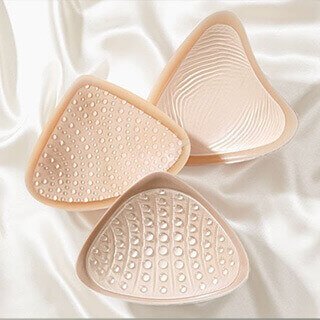What to Expect at a Post-Mastectomy Fitting
 About six to eight weeks after breast surgery it will be time to see the post-mastectomy fitter. Women who have had a mastectomy should be able to wear a weighted prosthesis at this time since their incision should be healed. Women who experienced breast conserving surgery will also benefit from a post-mastectomy fitting as there are partial prostheses to help fill in the missing portion of their breast and provide symmetry. Medicare and most private insurance plans have coverage for breast prostheses and bras. If you are in doubt about your coverage, call the number on your insurance card and inquire. Some policies have network provider restrictions to consider that can influence coverage benefits.
About six to eight weeks after breast surgery it will be time to see the post-mastectomy fitter. Women who have had a mastectomy should be able to wear a weighted prosthesis at this time since their incision should be healed. Women who experienced breast conserving surgery will also benefit from a post-mastectomy fitting as there are partial prostheses to help fill in the missing portion of their breast and provide symmetry. Medicare and most private insurance plans have coverage for breast prostheses and bras. If you are in doubt about your coverage, call the number on your insurance card and inquire. Some policies have network provider restrictions to consider that can influence coverage benefits.
Who does the fitting?
The fitters are trained, usually by manufacturer-based education programs, to fit bras and prostheses. They are taught which products work best with different surgery types, and how to handle special circumstances. Some fitters strive for nationally recognized professional status through organizations like BOC (Board of Orthotists/Prosthetists Certified). Many fitters are breast cancer survivors themselves.
About six to eight weeks after breast surgery it will be time to see the post-mastectomy fitter. Women who experienced breast conserving surgery will also benefit from a post-mastectomy fitting as there are partial prostheses to help fill in the missing portion of their breast and provide symmetry.
The Fitting Process
The fitting should be conducted in a manner that offers the person being fitted complete privacy.
The fitter will first assess the condition of the skin at the mastectomy site. There should be no drainage or open wounds at the surgery site, or incision. Either of these conditions would require permission from the patient's physician before proceeding.
The fitter will determine the proper bra size by taking measurements at strategic points on the chest wall and around the rib cage. The fit of the bra is crucial to how well the prosthesis will be tolerated, and how natural the fit will be. Mastectomy bras today are pretty and feminine while providing the support needed to keep the prosthesis in the correct position. Although it is not mandatory to use a mastectomy bra with a breast prosthesis, it is recommended.
Next comes the prosthesis recommendation. The fitter will note the shape and drape of the existing breast and try a prosthesis that best approximates those dimensions. Prostheses come in many shapes such as teardrop, triangle, heart shaped and more. Some taper the material into the underarm area to fill in missing tissue there. Some prostheses are symmetrical, meaning they can be worn on either side, others are asymmetrical and are side specific. For women who have lost both breasts, the fitter will make suggestions for prostheses that are flattering to the patient's body dimensions.
The fitter will place a soft drape or smock on the patient and show the patient in the mirror how she looks with the products chosen. This is where the patient should let the fitter know if she is happy with the results or if she wants to try something else. Most importantly, if the patient is not happy, speak up!
A yearly visit to the fitter is a good idea. Women's bodies change in response to hormonal changes and weight fluctuations. The natural breast will change in response to these factors and a change in prosthesis may be needed to maintain symmetry.
Before leaving the fitter's facility, instructions on use and care as well as the retailer's return policy should be given.
Premium prostheses such as Amoena have a two year warranty against manufacturer's defects. This does not include punctures or damage from perfumes or other personal toiletry items. Daily cleaning with Amoena Breast Form Wash and storing the prosthesis in its cradle when not in use should keep your Amoena breast form in great shape.







